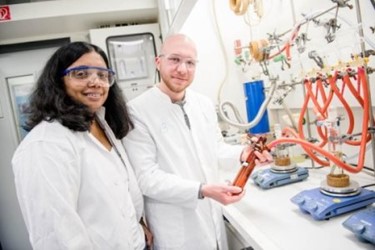Ultrathin Transparent Silver Layers For Solar Cells

Such silver layers could make solar cells and light emitting diodes more efficient. But their production is difficult so far.
Researchers at the Ruhr University Bochum and the Bergische Universität Wuppertal have developed a new production method for transparent, wafer-thin silver layers. The material could help to develop highly efficient solar cells and light emitting diodes. With conventional chemical methods, however, it has not been possible to produce particularly thin and pure silver layers. In the journal "Angewandte Chemie" a team around Prof. Dr. Anjana Devi and Nils Boysen from the Bochum working group Chemistry of Inorganic Materials together with the group around Prof. Dr. med. Thomas Riedl from the Wuppertal Institute for Electronic Components on a new synthetic route. The article was published in advance online on September 27, 2018.
New chemical precursor
"The precursors for depositing ultrathin silver films are extremely sensitive to air and light," says Nils Boysen. Although the precursors can be stabilized with fluorine, phosphorus or oxygen. "However, these elements contaminate the thin film and contaminate the equipment used to make the films," the researcher continues. As part of his master's thesis, Boysen and colleagues developed an alternative for stabilization.
The scientists designed a chemical silver precursor in which the silver is packaged in an amide and a carbene and thus manages without the stabilization with fluorine, phosphorus or oxygen. They showed that with the new precursor thin silver layers can be applied to an electrode. For this they used the atomic layer deposition. In the process, the precursor is transported in gas form to the electrode and deposited there as a silver layer of only a few atomic thicknesses. Because the silver film is so thin, it is transparent.
"Because the process works at atmospheric pressure and low temperatures, the framework for industrial manufacturing would be favorable," says Anjana Devi.
The prospect of highly efficient solar cells and luminaires
Using a series of tests, the researchers showed that the silver thin films produced by the new process are pure and electrically conductive. "From a process engineering point of view, the successful synthesis of the new precursor opens the door to realizing ultrathin silver layers," summarizes Thomas Riedl. "They are promising the production of new electrodes for highly efficient solar cells and luminaires."
"The interdisciplinary cooperation between the Bochum materials scientists and the Wuppertal engineers was the key to success," says Anjana Devi.
Source: Ruhr University Bochum
